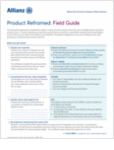They might not adequately understand the fallout from their decision, but taxpayers generally prefer back-loaded (Roth) retirement plans to front-loaded (traditional) ones.
That’s according to a study from the Center for Retirement Research at Boston College, which also finds that, despite their apparent preference, individuals put a lot more money into front-loaded plans than they do back-loaded ones.
The apparent contradiction between preferences and actions can likely be partly explained by people’s lack of awareness and understanding of how their choices affect expected tax-rate changes.
In spite of the fact that these tax-rate changes are the primary factor driving the relative after-tax returns of front- and back-loaded plans, the report says, evidence is mixed on whether people appropriately weight those tax-rate changes when deciding which type of plan to use — or rely on other factors that aren’t as relevant.
And apparently the latter is true.
The study offers evidence that “plan attributes related to individuals’ noneconomic attitudes and preferences consistently influence plan choice.”
In fact, although saving levels and investment risk are tough to predict, given their idiosyncratic nature, they’re both “negatively associated with preference for back-loaded plans.” In addition, both could play a role in how the plans are perceived by people saving for retirement.








 August 10, 2017 at 12:56 PM
August 10, 2017 at 12:56 PM










